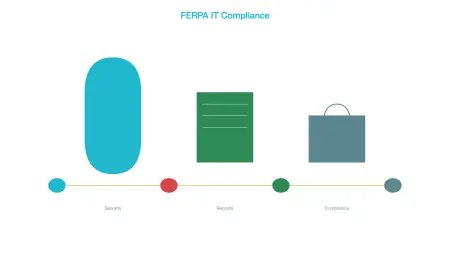Easy Tips to Install a GPS Tracker for Your Vehicles: A Step-by-Step Guide for Safe & Smart Tracking
Learn how to install a GPS tracker in your vehicle with this easy step-by-step guide. Ensure safe, smart, and efficient tracking today!

There is an escalating vehicle theft and increased desire to have an intelligent drive; this means fitting a GPS tracker for a vehicle is not a luxury anymore but a requirement. Trying to make your car safer, teen driving, or use a car fleet? Vehicle GPS trackers will tell you what is happening in real-time and provide assurance.
This is a guide on simple tips that will help you easily install a GPS tracking device for a vehicle, and you do not have to be a tech-savvy person. The whole process, including selecting the appropriate device and proceeding with the final setup, is described in every detail.
Have you ever heard of GPS trackers for vehicles?
A car tracking device is a small gadget enabled by the Global Positioning System that assists in knowing your car's current location. It is able to communicate with satellites and pass the data to your smartphone, computer, or to a centralized dashboard.
The following are the entities that use these GPS tracking systems in cars:
Ordinary auto owners
Carmap companies
Fleet managers
Ref. Surveillance of teen drivers
People who have costly or new cars
Advantages associated with Vehicle GPS trackers Key
Now, before getting our teeth into the installation, it is worth knowing why thousands are making the transition to GPS:
Real-Time Tracking of Location
Have the location of your car in mind all the time.
Anti-Theft Protection
Direct notifications in case your car has unforeseen motions.
Trip History and Route Reports
Look up previous travel where fuel saving and tracking are suitable.
Geo-Fencing Capabilities
Create a virtual fence and receive alerts when the car goes out of that zone.
Monitoring the Behavior of the Driver
Track speed, stopping, and idling time—perfect for fleet or family use.
Emergency Assistance
Certain trackers have crash buttons or SOS.
The Full Guide for Installing a GPS Tracker in Your Vehicle
1. Select the Right GPS Tracker for Your Needs
There are multiple types of GPS tracking devices for vehicles, and your selection will definitely depend on the way you intend to use them:
OBD-II Trackers: These plug right into your car's OBD port. A fast and easy install.
Hardwired GPS Trackers: The GPS tracker is installed into the car's electronics (wires). This is a great choice for hidden tracking.
Battery-Powered GPS Trackers: Portable GPS trackers do not draw power from the car. This works best for tracking any off-road vehicles for a short time or asset tracking.
Tip: Choose a tracker that works with the tracking app or web-based dashboard you select to ensure you get the best and simplest real-time tracking experience.
2. Choose the Best Location for the Ultimate Install
In general, all of the common locations for car GPS trackers listed below work effectively:
Under the dash (for OBD-II or wired trackers)
Behind glove box
In the front or back of the bumper (for wired trackers)
Under the seats or car mats (for battery trackers)
Keep in mind: GPS signals can be blocked by metal objects. Plastic and glass are more friendly to GPS devices.
3. Carefully Read the Manufacturer’s Manual
Even if you feel comfortable with a DIY installation, it's good to read the product guide. Most modern GPS tracker devices for vehicles come with
Installation guides
QR codes to pair the mobile app
Power source details
SIM card info (if it requires one)
4. Get Your Vehicle Ready for Installation
Before getting started:
Turn off the ignition.
Ensure your battery is charged.
Have your essential tools available (e.g., screws, wire strippers if hardwiring)
5. Install the Tracker Depending on the Type
OBD-II GPS Trackers:
Identify your vehicle's OBD-II port (typically located under steering wheel)
Plug the device into the port.
Wait for the power signal(s) to turn on.
Pair with the tracking app on your mobile.
6. Download and set up the tracking app.
After installation, download the specified app (or app version) from the iOS store or Android store. Log into the app, or set up a 'device' on the account by using
Device ID or IMEI.
SIM Card Number (if you are using cellular data).
QR code scan (depending on model).
You can also establish speed alerts, geofencing zones, and other notifications within the app configuration settings.
7. Assist with a Test Drive
After the installation:
Take a short test drive around the block
Review the real-time updates on your app
Review location history, speed, and location accuracy
Check that alerts are sent as configured
8. Secure the Device Permanently
When you are happy with the performance:
Use the zip ties or screws to securely mount the device (hardwired models)
Be sure to use a keeping mount that is not visible but still has a clear view
Use insulation tape to protect the wires
9. Schedule Maintenance Check
Schedule monthly maintenance to check the performance of your car GPS tracker.
Software update availability
Battery charge (battery powered)
Signal strength and whether the app is accessible
10. Comply and Respect
Be sure that you are not violating any privacy laws. Generally, it is okay to GPS track vehicles that you own or have permission to monitor (like fleet cars or personal vehicles); under no circumstances should you be using a GPS device to manage someone's mobility without their consent.
Supplies You Might Need
-
Screwdriver set
-
Electrical tape
-
Wire connectors
-
Vehicle fuse tap (if connecting to the fuse box)
-
Smartphone to sync my app
-
Zip ties or adhesive tape
Common Mistakes to Avoid
Installing near metal frames (interferes with signal)
Not registering the tracker before use
Forgetting SIM/data activation to track in real time
Not updating your firmware
Not securing wiring or leaving it exposed
Final Thoughts: Smart, Simple & Safe
Installing a GPS tracker for a vehicle is not rocket science, and you do not need to be an expert to make it happen; just some preparation and good tools. Regardless if you use a DIY, plug-and-play type, or a hidden, hardwired unit, you will gain extra safety, access to real-time data, and an overall better sense of control.
Companies providing vehicle GPS trackers today have worked hard to help facilitate the simplicity of user experience and comfort of access to monitoring from mobile devices and installation preference. You do not need to be very technical to get started.
FAQ
Q: Can I install a GPS tracker myself?
Yes! A majority of vehicle GPS trackers are designed for the consumer to install themselves, especially OBD-II or battery-powered types.
Q: Will it drain my car battery?
When installed as required, GPS trackers use very little power, providing minimal drain on the car battery. Battery-powered options do not pull anything from your car battery.
Q: How much does a GPS tracker cost?
You can find high-quality GPS tracking devices for vehicles ranging from approximately $50 to $150. Monthly service plans for data and connectivity will be anywhere from $10 to $30 maximum.
Q: Can I Track Multiple Vehicles at Once?
Absolutely! Fleet solutions or the many device dashboards allow you to monitor several car GPS trackers at once.
Ready to Get Started?
Now that you know how easy it can be, there's no reason to wait. Protect your asset, protect your family, or manage your fleet without the headache. Start with selecting the best GPS tracker for cars that meets your needs and set it up today; it's that easy!
What's Your Reaction?
 Like
0
Like
0
 Dislike
0
Dislike
0
 Love
0
Love
0
 Funny
0
Funny
0
 Angry
0
Angry
0
 Sad
0
Sad
0
 Wow
0
Wow
0


















































